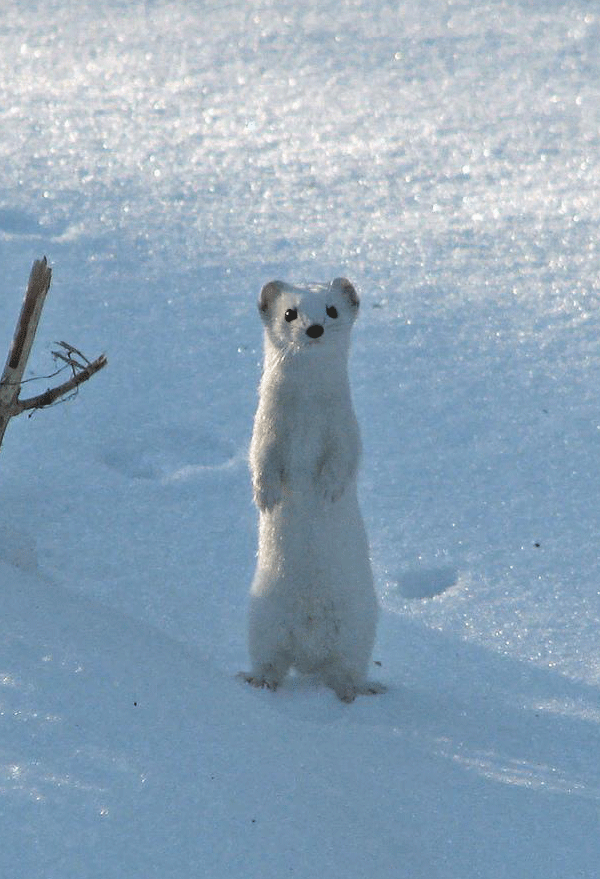Weasels are not rodents but are closely related to skunks and minks. Pound for pound, the Least Weasel is one of the toughest, fiercest predators around and possibly Nebraska's smallest carnivore.
 Image by Marko_K, https://www.flickr.com/photos/marko_k/91761454
Image by Marko_K, https://www.flickr.com/photos/marko_k/91761454Appearance
The Least Weasel, Mustela nivalis, is small mammal generally larger than a mouse yet smaller than a rat. It has an elongated slender body (5-7 inches) with a short tail (1-2 inches) and short limbs.
In the summer, the Least Weasel has short dense brown fur with a light underbelly and white feet and black eyes. In the winter months, it molts into its camouflage white color with a few black hairs on the tip of its tail. Its dark eyes, smaller round ears, and long whiskers are easy to see. Teeth are small and sharp, with prominent canines. The feet have five fingers with sharp claws.
Habitat
The Least Weasel inhabits open areas such as meadows, marshes, brushy areas, and agricultural fields.
Weasels are mostly nocturnal. It easily slips through the burrows of mice and other small rodents, killing its prey quickly with a bite to the back of the skull. Food habit studies revealed that they eat mice primarily, and sometimes consume 50% of their weight in mice nightly. Small birds, eggs, small snakes, and shrews are fair game when the opportunity presents itself.
Least Weasels mark their territory with a pungent musk that they also use to warn predators. They elicit a high-pitched sound when challenged.
A Least Weasel can enter domestic poultry, fowl, or avian confinements and readily take eggs, and kill chicks and smaller adult species.
Exclusion is the Best Control
Proper exclusion is the best solution. These weasels can dig, climb, and slip through any entries greater than ½ inch. Use strong secure wire as they can rip thin wire and many materials.
You are allowed to trap weasel in Nebraska but first must obtain a permit from Nebraska Game & Parks Commission. No toxicants or poison baits are registered for use on weasels in Nebraska.

